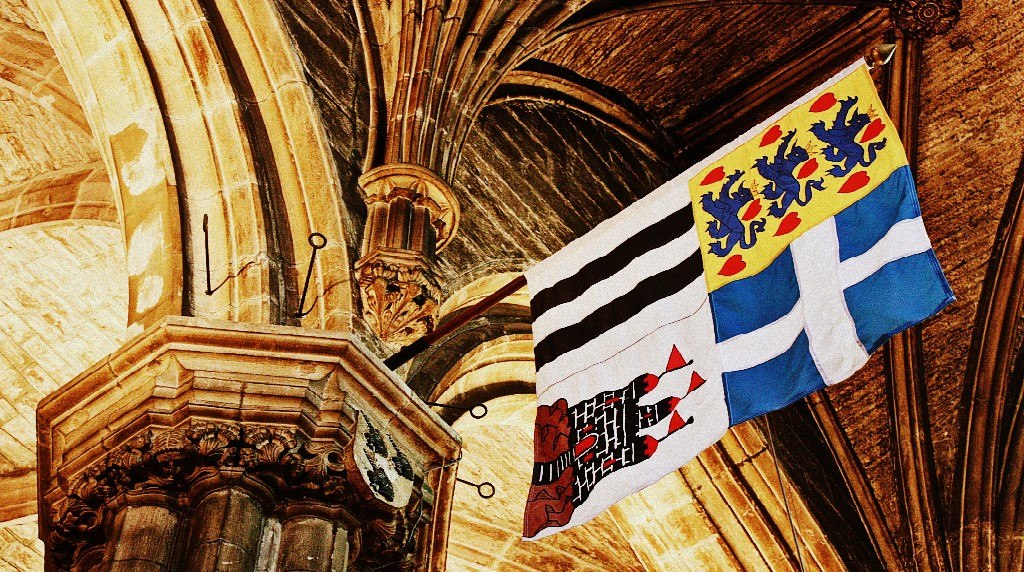
The Duke of Edinburgh’s coffin will be draped in his personal standard as it is carried into his funeral at St. George’s Chapel, Windsor. The standard, designed in 1947 at the time of his marriage to the then Princess Elizabeth, depicts his rich royal history and his own personal story.
The standard is in four quarters with three representing his family line. The top two quarters are linked to Prince Philip’s regal ancestry. He was born on June 10th 1921 as a Prince of Greece and Denmark with both countries represented on the standard.
The striking yellow quarter represents the Danish coat of arms. The design can be traced back to the late 12th century although it has been modified several times since with the current representation adapted in 1819. The arms features three pale blue lions passant, each wearing crowns, and nine red lily pads or heraldic hearts.
The other top quarter features the white cross on a blue background that forms part of the flag of Greece. At the time the standard was designed, the official Greek flag only featured the cross – the more modern design we know today, which also includes blue and white stripes, wasn’t formally adopted until the latter part of the 20th century.
Prince Philip had adopted his mother’s family name of Mountbatten before his royal wedding and it, too, is represented on the standard. The bottom left corner features two black stripes, or pales, on a white background. The simple design can be traced back to the arms used by the family’s ancestors who ruled the town of Battenberg in Hesse, Germany.
The final quarter shows the city of Edinburgh in honour of the dukedom bestowed on Prince Philip ahead of the marriage that would set him on the path to becoming Britain’s longest serving royal consort. The Scottish capital is represented by its castle which traces its royal roots back to the 12th century.
Now, it adds another chapter to its long history as it will be among the most recognisable symbols at the funeral of the Duke of Edinburgh. As his final journey begins, his coffin will bear the imagery of the many facets of his life and personal story.

